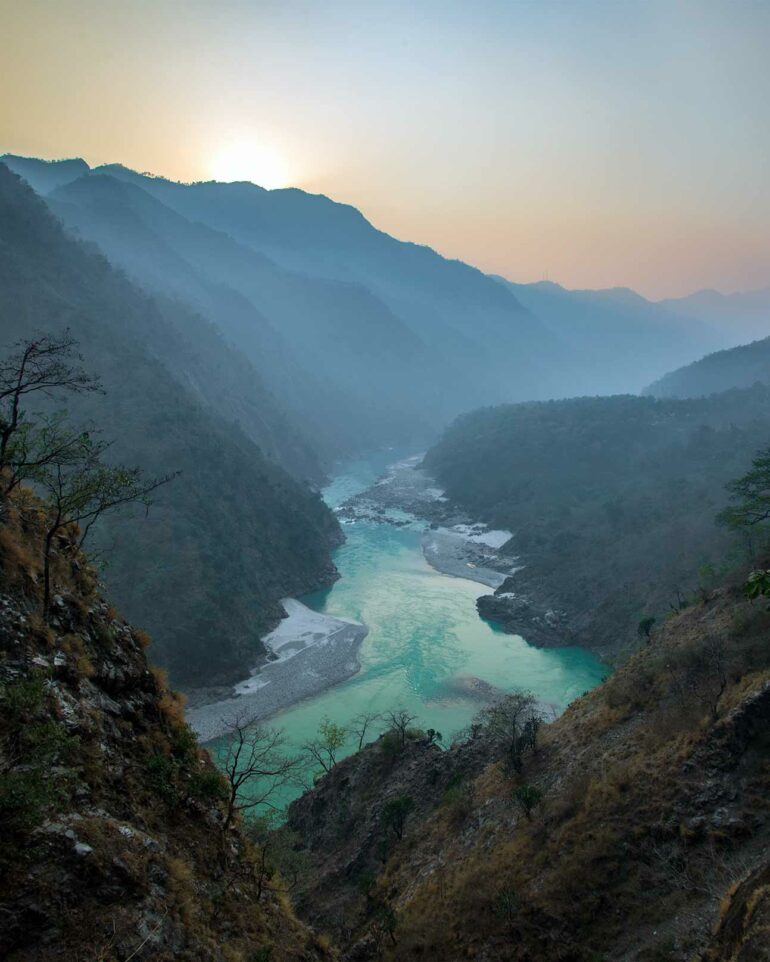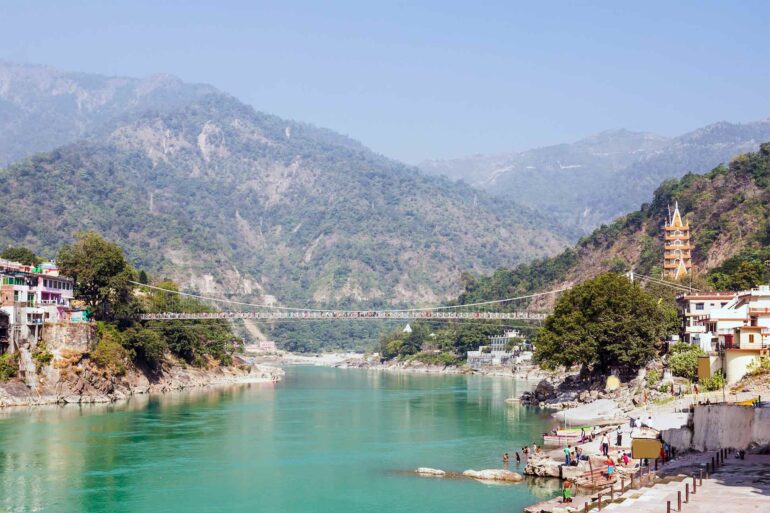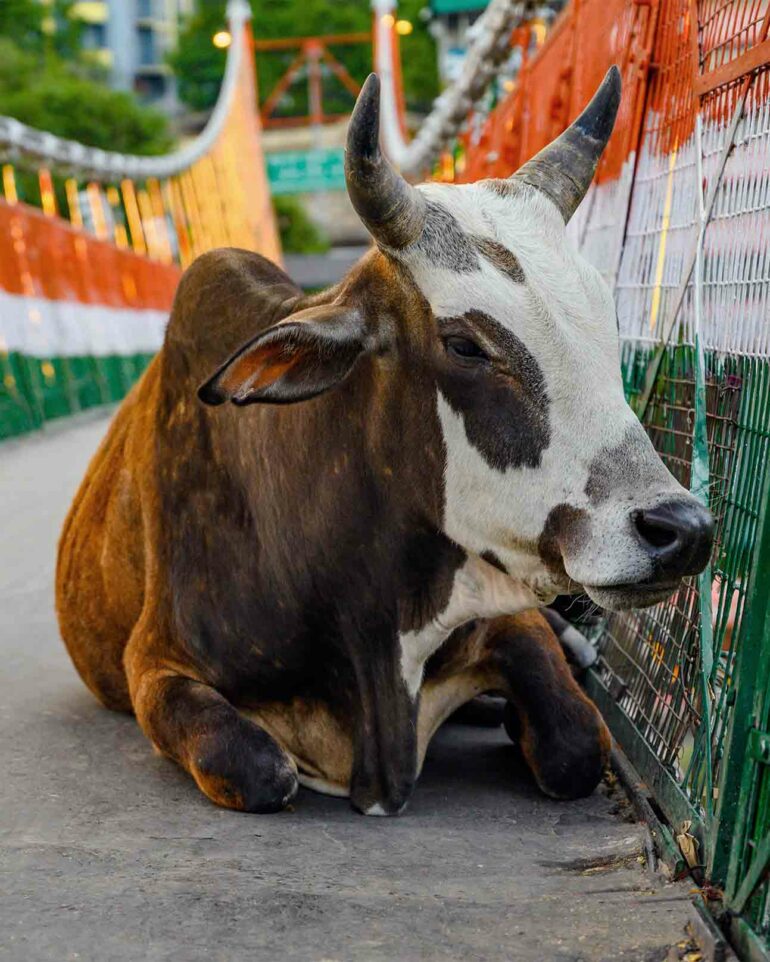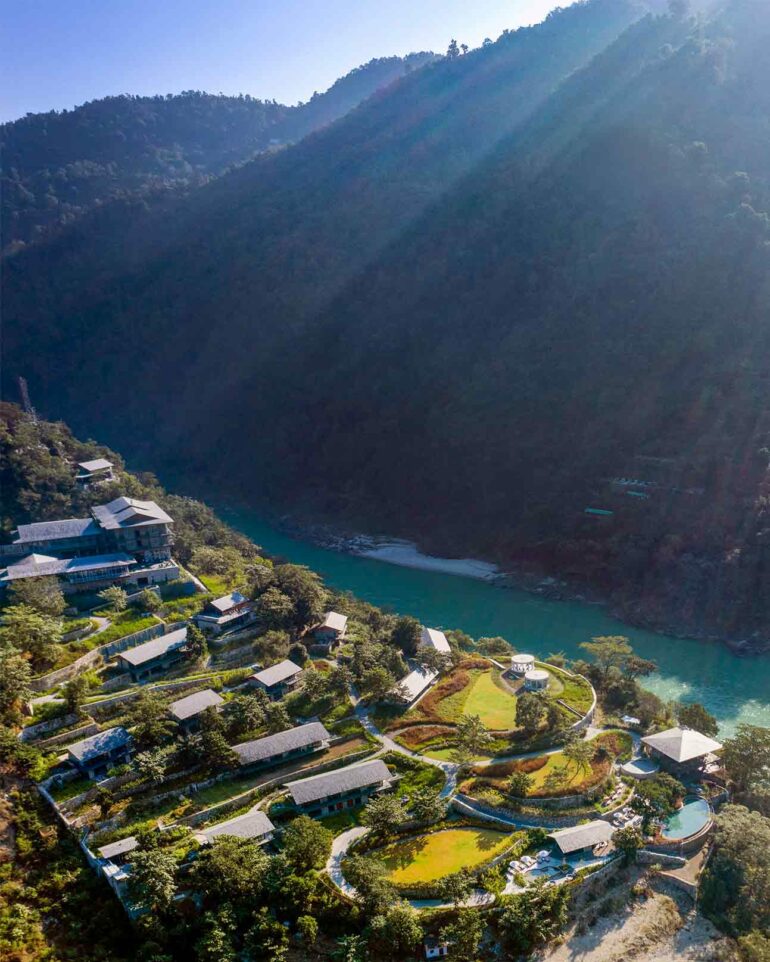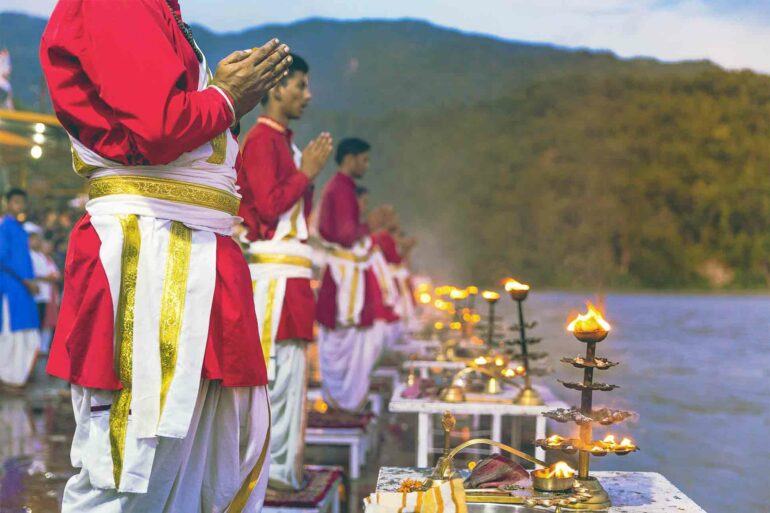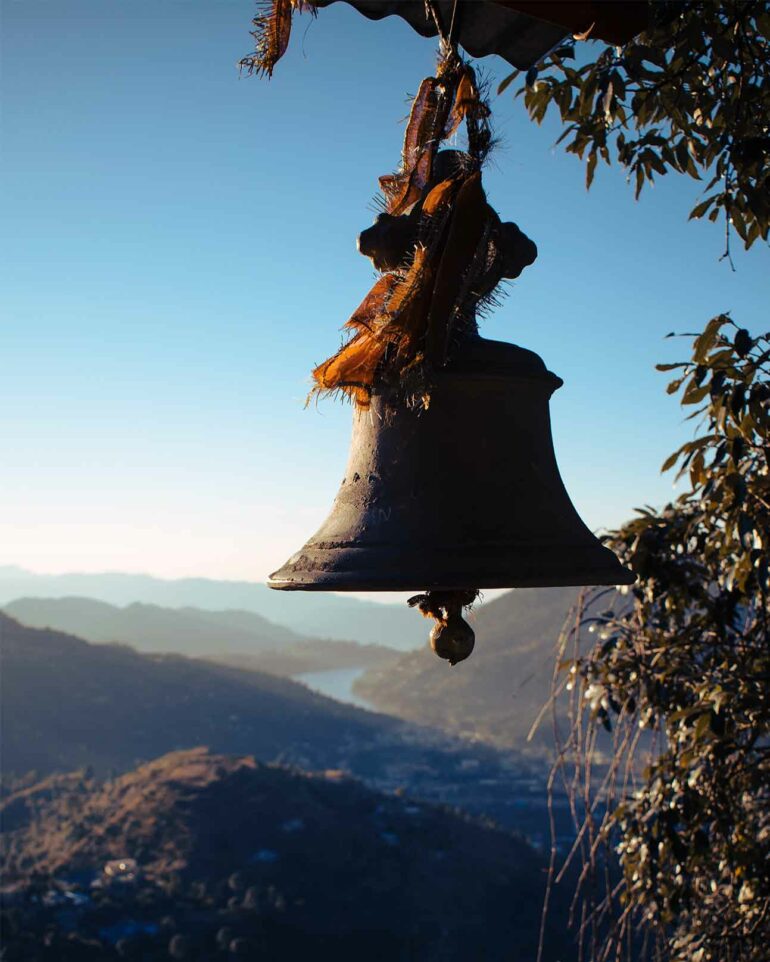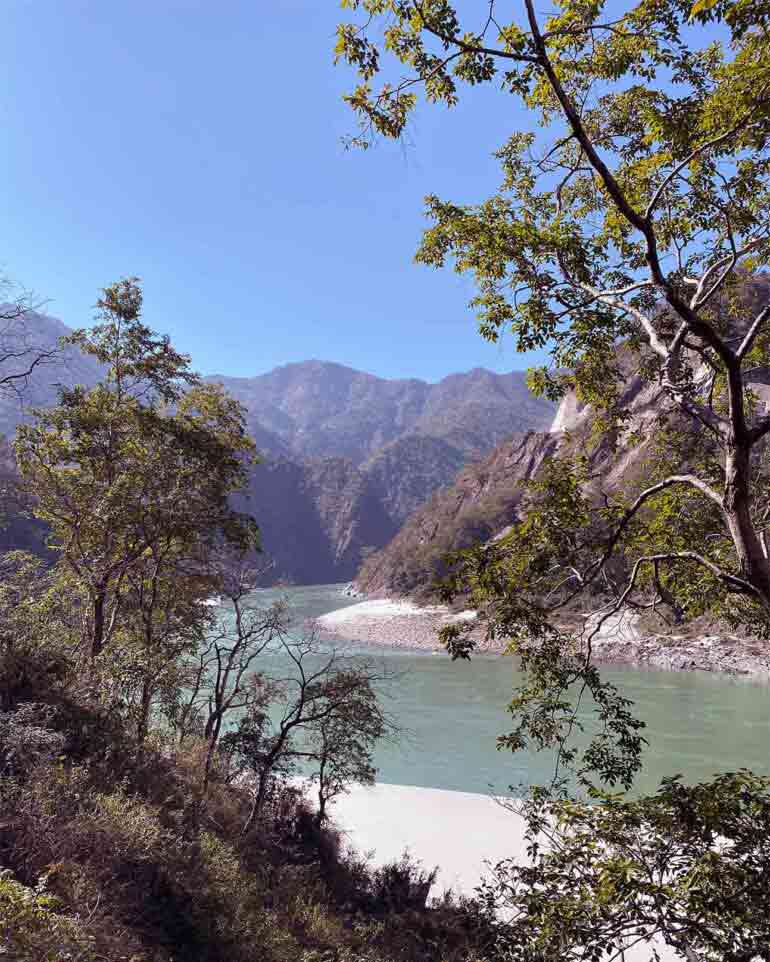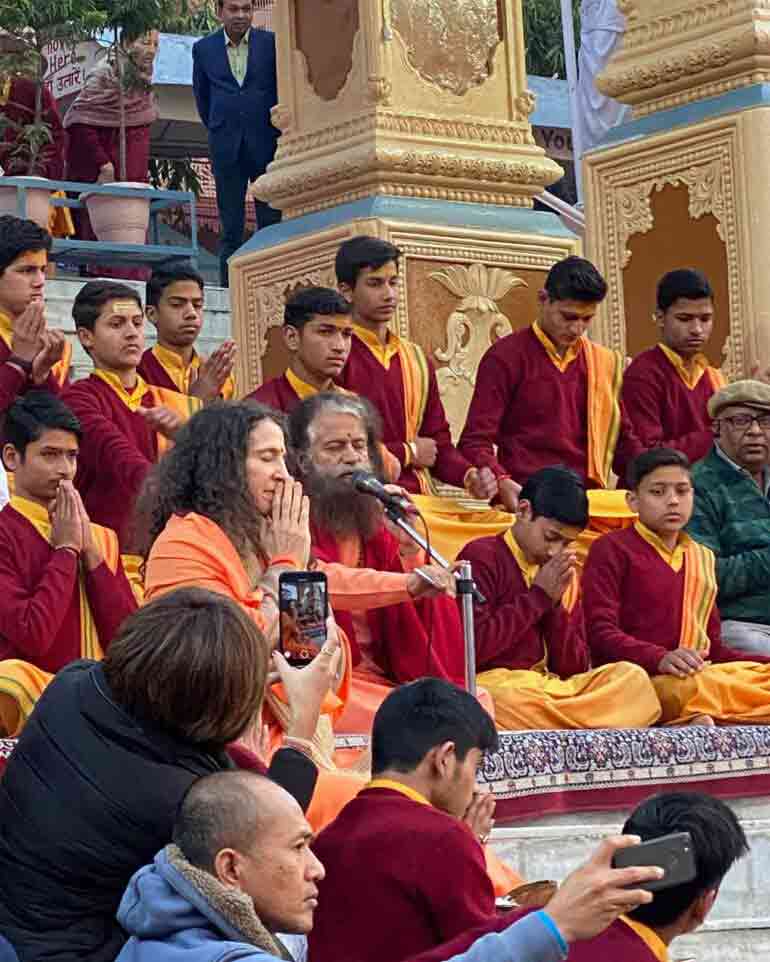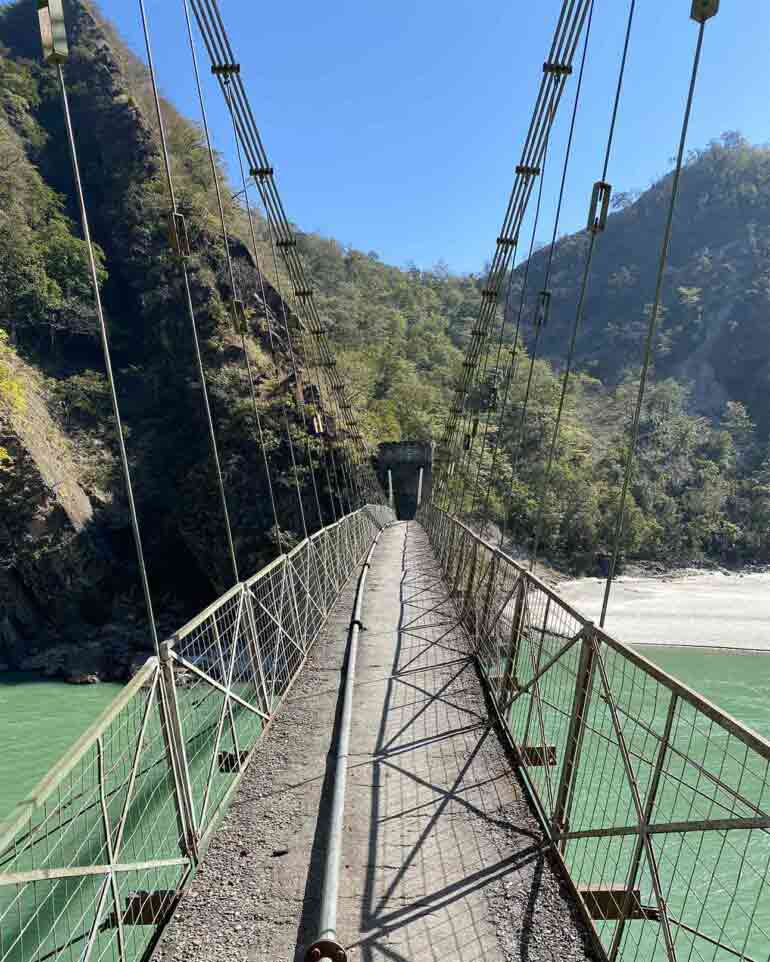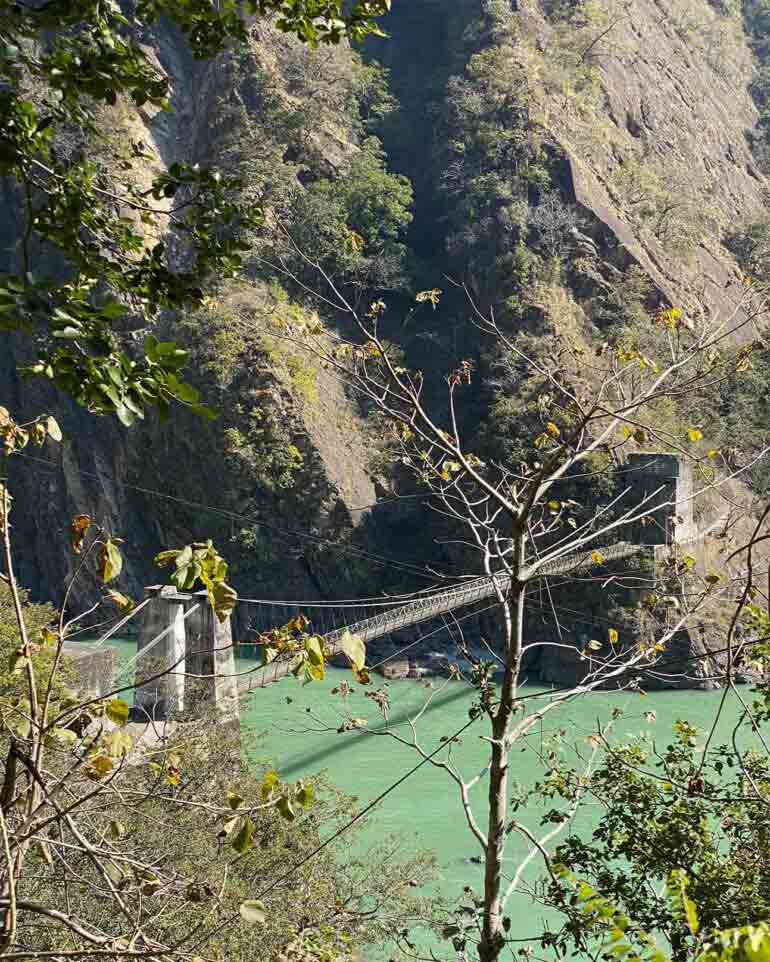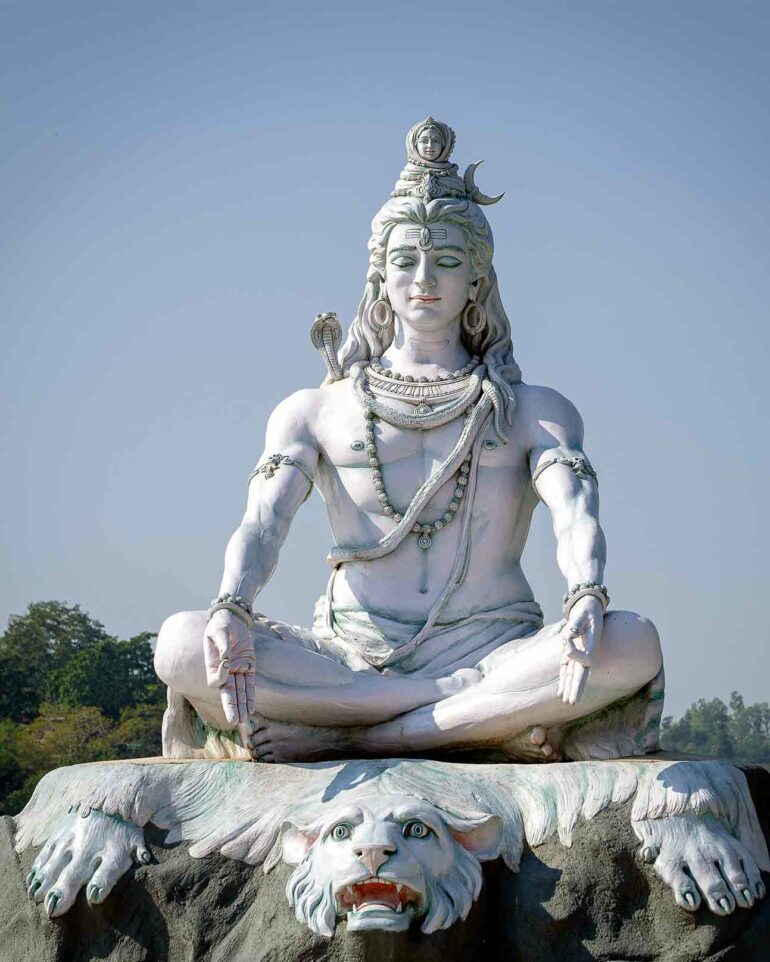Rejecting the hype and commercialism of 21st-century living, Uwern Jong gets away from it all in Rishikesh and finds in nature the solace and healing he sought.
Truth be told, I am not a very spiritual person. Sure, I’ll partake in a yoga class, but for me it’s more about the stretching than the breathy chanting and meditation. The unnecessarily loud exhalations actually give me the giggles. And dare you ask me to give up materialism and meat? You’ve got another thing coming.
So, you can imagine my incredulity as I find myself sitting cross-legged among throngs of devotees at Parmarth Niketan, Rishikesh’s most popular ashram, preparing for the Ganga Aarti, an allegedly restorative dusk-time ritual in prayer to Mother Ganga, goddess of India’s most sacred waters, the Ganges.
I’m prepared to let myself be persuaded, though, because there has got to be something about this phenomenon that unites people of all creeds and backgrounds from all over the world to come here, to believe, to seek this so-called inner peace. And where better to do it than in the spiritual capital of India – Rishikesh, a small town close to the source of the venerated river in the Garhwal hills of Uttarakhand, from where it’s said all the transcendent powers of the mystic river emanate.
To be fair, Rishikesh has had some great marketing. The Beatles, among countless other celebrities, anointed it when they visited at the height of their fame. John, Paul, George and Ringo were the influencers of their time, hosted at the infamous Chaurasi Kutia ashram by one cunning Maharishi Mahesh Yogi, the so-called Giggling Guru, who had achieved international cult status one year on from the Summer of Love. He giggled himself all the way to the bank, it seems, and paved the way for these super-ashrams, such as Parmarth – which I can only describe as a Disneyland of divinity and devotion – to grow.

This story first appeared in The Next Chapter Issue, available in print and digital.
Subscribe today or purchase a back copy via our online shop.
As the ceremony starts, Pujya Swami Chidanand Saraswatiji, the sagely guru-in-chief here (aka the Indian Walt Disney), presides with flowing robes and equally flowing follicles. He is flanked by two women and an army of uniformed choristers who chant and sing with him over the loudspeaker that quickly crescendos to drown out what other ashrams are doing with equal gusto upriver. A film crew choreographs their moves around him, beaming tonight’s live telecast on Pujya Swamiji’s Facebook page.
Sitting closest to him is a circle of young, blonde, tanned Californians and their pasty European gap-year counterparts. They look like they haven’t slept very well for the past few nights – you don’t get much bang for your buck on a residential retreat at an ashram. But that’s immaterial. They are here in search of something that their money can’t buy. They sway along with their eyes closed, lost deep in Pujya Swamiji’s chanting, mouthing along to the Sanskrit words they downloaded to their iPhones earlier that morning. Despite the back-to-basic digs, there is free and fast WiFi here – convenient in the sharing and spreading of the Parmarth gospel.
I remind myself to keep my mind open, so I focus instead on the Ganges, now a deep emerald green as it is golden hour. I watch the locals light their diyas (oil lamps) and my eyes lock beyond them on an imposing ivory-white statue of Lord Shiva, plinthed over the water. I admire his rippling muscles (the artist who installed him clearly had an appreciation for male beauty), then I move my gaze to his face and find a moment of peace in his features as a bedazzling fiery-red sunset illuminates the sky and bathes him in a halo of otherworldly light. For a moment, I’m entranced.
But one of the women by Pujya Swamiji’s side, Sadhvi Bhagawati Saraswati, breaks the spell by talking in English – American, actually, heavily accented Californian Valleyspeak – about her native Angeleno upbringing like that of an Echo Park, kale-juicing yogi. She plugs her upcoming group satsang session and promotes a yoga festival at the ashram. The crowd surges to the water to wave their oil lamps and the prayer reaches its climax.
“I move my gaze to his face and find a moment of peace in his features as a bedazzling fiery-red sunset illuminates the sky and bathes him in a halo of otherworldly light.”
While I can’t get my head around the spiritual dogma in Rishikesh, I’m enchanted by all that surrounds it. Not the ‘Sgt Pepper’s saag paneer’ on the menus of its countless Beatles-tribute cafés or the perpetual sitar soundtrack of Ravi Shankar. I can do without the capitalism that lines the river and valley here, but I’ll be the first to admit that its raw beauty is breathtaking – the Siwalik mountain terrain (its real name hidden in the shadows of the more marketable ‘Indian Himalayas’), the crisp clean air, the lush woodlands that cast their reflection on the pristine glacial meltwater Ganges, which thunders through town like smaragdine silk. It’s easy to understand why people are enchanted by this place. Overlay it all with the Hindu legend of Gangaji, the goddess whose waters absolve the soul of all its sins and of the religious construct of the cycle of life and death, and it seems reasonable that Rishikesh is considered to be one of India’s most spiritual centres.
Even the human geology here is awe-striking, yet for me it’s all set up to showcase the astounding nature. The stacked architecture of the valley walls provide uninterrupted vantage points. The striking Kailash Niketan, the city’s lauded temple, and its 13-storey ‘pagoda’ with each floor a shrine to a different deity, seems designed to make the most of the river views and the sunset, while providing something for everyone; a kind of ninth-century observation deck. Behind them, a complex labyrinth of shops and stalls forms a small medina-like conurbation, with veneers of hand-drawn signs and the gentlest touts I’ve ever encountered jostling for your attention. And their common selling point? The view and a ‘magical’ rudraksha-seed trinket or two, of course. Even the Lakshman Jhula, Rishikesh’s landmark suspension bridge, seems there just to provide the opportunity to step out over the river and drink in the magnificent surroundings.
There is no doubt, however, that divinity is in the air here. You can’t escape from the wafts of incense, nor can you turn a corner without running into a weathered sage or an emaciated (albeit sacred) cow or a brightly painted statue of a Hindu deity or a holy tree that inconveniently defies sensible town planning. And it’s all to a backdrop of the hypnotic hysteria that you’d expect from any Indian urbanity. It’s quite a spectacle and I’m enamoured. But is my soul cleansed? Not really. For me, Rishikesh is a day trip and frankly the least chakra-realigning and life-affirming part of my few days in the area. I actually find far more peace in the little village of Singthali, some 20 miles from Rishikesh, at the Taj Rishikesh Resort & Spa, where I’m staying during this trip.
And before you chastise me for being a comfort queen, let me tell you why. Because it is here and in its surrounds that I experience nature’s healing powers, away from the supernal pageantry of Rishikesh itself.
Of my own accord, I rise daily at dawn each morning to walk down to the pebbly beach that melts into the milky green Ganges. I sit quietly on its bank, switch off my phone and let the cool breeze caress my skin as light slowly emerges over the terrain. I love the staggered sunrise here. It reminds me that, regardless of whatever happened yesterday, I can start the new day beautifully. I wash my face in the fresh riverwater, not as a blessing, but to awaken my senses before an hour-long yoga session (or stretching class, as I choose to call it) accompanied by local birdsong and followed by a stress-busting champi (head and shoulder massage). En route to breakfast, I stop at a paved garden where five trees, each said to be sacred in Hindu mythology, entwine. I admire its botanical beauty not for its mysticism but for its likeness to how, just beyond it, the valley, mountains, river and rural living interweave.
I take long hikes in mesmerising landscapes, with the roaring Ganges beside me to navigate me up and down stream and the snow-capped tops of the Greater Himalayas, peeking over the Uttarakhand hills, as a landmark. And, while I know everything I see probably has an extraordinary fable to it, here I can make my own decision as to whether what I see in front of me is the work of gods or a quirk of geology.
I cross bridges that stretch across the valley and encounter little temples and shrines along the way. For me, it’s more ‘magical’ here than in Rishikesh. I prefer the birds and butterflies to the holy cows. I’m more enthralled by the miracles performed by the local women I meet than I am by the old sages. They walk in just flip-flops – some barefoot – on the narrow path, balancing enormous bundles of sustainable (they replant five trees for every one they fell) rosewood and sal on their heads, many times their body weight. They laugh and joke in their native Garhwali (my guide Ayad can’t translate what they’re saying – the dialect on this side of the river is different from that on the other) and flash smiles as I amble past. I later learn that it is these women who gave birth to tree-hugging activism as we know it today. Around the same time The Beatles visited, the Chipko movement (‘chipko’ means ‘hug’ in Hindi) was founded by these local tribeswomen, who were back then already protesting against commercial logging in these mighty forests.
A pink, disused watermill appears as a marker to descend to the white-sand beach that stretches for miles. I unlace my boots and feel the soft powder between my toes. It feels uncharacteristically cold. Ayad says something poignant at that moment, as he carefully balances some pebbles on top of each other: “pleasure is always derived from something external, but joy is derived from within”.
But little did I know that during this trip I am to take the ultimate rite of passage with Mother Ganga. At a pit-stop on what was a surprise excursion – an exhilarating white-water rafting adventure on the river – I’m asked to climb up high on a rock and leap into a patch of the Ganges that is inexplicably still. I emerge feeling like a new person, physically revived. The expedition leader feeds me some story about soul-cleansing as I tuck into a plate of warming, chai-wallah-brewed Maggi instant noodles (if you grew up Asian, this is food for the soul). Baptism is what he calls it. I call it hydrotherapy.
“The Chipko movement was founded by these local tribeswomen, who were back then already protesting against commercial logging in these mighty forests.”
As the sun sets each day, the Taj Rishikesh Resort & Spa performs its own Ganga Aarti ceremony, inviting priests from a local village to lead the ritual. It’s a low-key affair and the vista makes the event far more ethereal than back in ‘Disneyland’, as the cerulean sky turns bright pink and orange. It is a timeless moment, one of absolute beauty in the present.
As night falls, I feast on clean, freshly cooked Pahadi food – Himalayan Indian gastronomy by celebrated chef Satya Sharma. In itself an art form, it’s occasionally matched with Ayurvedic nutrition principles. At other times, it’s just pure, unadulterated gluttony. And this is the difference between an experience like this and going to an ashram. Should I want to sup a turmeric martini or five, I can do so without guilt.
It’s ironic that it’s here in one of the most spiritual parts of India that I discover that I’m actually a rationalist: I maintain that truth should be determined by reason and fact, rather than faith. There are times when I’ll go along with things, of course. I’ll accept that it’s okay to believe that there may be more to the world than meets the eye. But here, when there’s real-life ‘magic’ as far as the eye can see in its natural wonders, it affirms that all the things that matter – beauty, creativity, love and ultimately happiness – can certainly exist in the physical world.
Uwern’s trip to India was in partnership with Abercrombie & Kent, who offer a three-night stay at Taj Rishikesh Resort & Spa, including transfers and accommodation, and a seven-night experience that includes four nights at the property as well as three at the Taj Palace, New Delhi, with all international and domestic flights and transfers as part of the itinerary. A&K also offer flexible booking conditions to their meticulously planned journeys and can help you create bespoke and authentic experiences to push your boundaries, wherever they might lie. The company’s long-standing networks allow them to uncover local secrets beyond the reach of most.
Photography by Uwern Jong, Intek1/iStock, Tye Morrs/iStock, Vivek Renukaprasad/iStock, Saiko3p/iStock, Jatin Malhotra/iStock, Narinder Pal via Unsplash and Aman Upadhyay via Unsplash
Get out there
Do…
… sample the local food. It’s flavoured with unique spices, such as jakhya mustard seeds, from the Himalayan foothills and often cooked without onion or garlic (considered aphrodisiacs), in line with traditional Hindu cooking.
… try your hand at white water rafting the Ganges with a reputable operator. It’s a thrilling way to experience the river and if it was good enough for Edmund Hillary (he navigated the Ganges by speedboat after he climbed Everest), it’s good enough for us.
… consider visiting at the end of winter or early spring. The waters are clearest when the glacier starts to melt.
Don’t…
… forget to study up on some Hindu mythology before you leave for your trip. Guides and locals alike are encyclopedic in their knowledge of it and can sometimes forget that you may be utterly clueless. A little background reading goes a long way.
… expect every moment of your trip to Rishikesh to be luxurious. India will often ‘keep it real’ and throw you some surprises that bring you back down to earth, but it’s all part of the experience.
… ever get in the river on your own and go off the beaten track. The currents here are surprisingly strong and can be dangerous even for expert swimmers.
The inside track

Devraj Singh is the general manager of the Taj Rishikesh Resort & Spa. His long association with the brand goes back to 1997, since when he’s been at the helm of three Taj properties and covered the four corners of India. As well as having a keen interest in ornithology, he is a passionate biker.
www.tajhotels.com
Bird
Take the four-mile Singthali Birding Trek with the hotel’s nature experts. En route you cross a stunning cable-suspension bridge, encounter a cave and come to a massive pebble beach. Ganga cormorants are among the rare birds you’ll see. The very lucky might even get a sighting of a hill antelope.
Drive
The area’s mountainous terrain makes for a breathtaking 15-mile drive, to a height of 5,000ft above sea level, offering spectacular views of the valleys as well as a rare glimpse of the snow-capped Himalayan ranges on clear days. The ideal time to set out is either early in the morning or late in the evening.
Dine
Why head out to a local restaurant when the Taj brings the best of the region to you? Our chef’s ‘Garhwali Thali’ tasting menu features cuisine indigenous to the area, with native ingredients cooked to perfection. The recipes for these traditional dishes were collected from local grandmothers – just to ensure authenticity.


